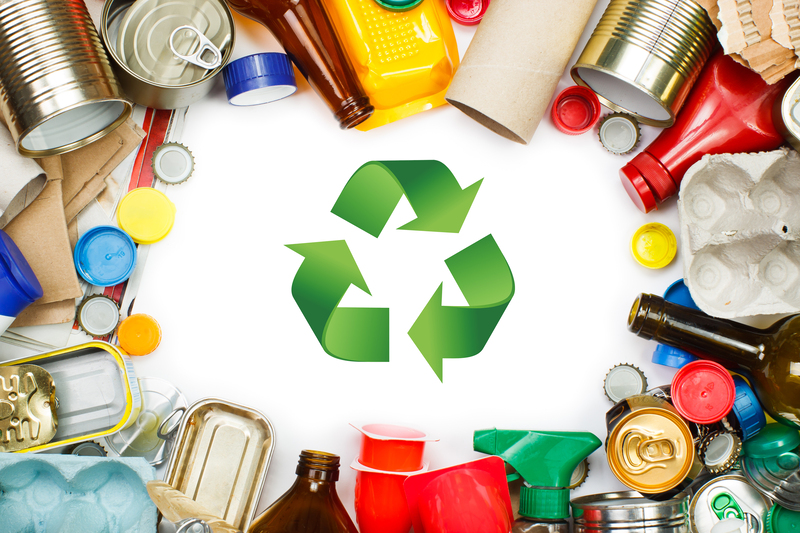Prevent Green Waste from Reaching Landfills
Posted on 27/02/2025
As global concerns about environmental sustainability continue to grow, managing green waste has become a significant priority. Green waste, which includes yard clippings, tree branches, and general garden refuse, often ends up in landfills. This not only exacerbates space concerns but also contributes to harmful methane emissions as the organic matter decomposes anaerobically. The importance of finding solutions to prevent green waste from reaching landfills cannot be understated.
The Environmental Impact of Green Waste in Landfills
When green waste is dumped in landfills, it decomposes without sufficient oxygen, leading to the production of methane--a potent greenhouse gas. Methane has over 25 times the global warming potential of carbon dioxide over a 100-year period. The environmental impact is considerable, contributing significantly to climate change.
Landfills are also finite resources, and as green waste accumulates, they fill up more quickly. This leads to the need for more landfills, which are not only costly to establish but also occupy large areas of land that could otherwise be used for more valuable purposes. This dual impact on both atmospheric conditions and land use compels a more efficient and eco-friendly approach to managing green waste.

Methods to Prevent Green Waste from Reaching Landfills
Composting
One of the most effective methods to handle green waste is composting. Composting is a natural process that turns organic waste into nutrient-rich soil, which can be highly beneficial for gardens and agricultural lands. By breaking down green waste aerobically, composting reduces methane production and returns nutrients back to the environment.
Mulching
Mulching involves spreading green waste over the soil to prevent weed growth, retain moisture, and improve soil health. This method not only diverts green waste from landfills but also provides numerous horticultural benefits. Mulch can be created from chipped or shredded branches, leaves, and other yard debris.
Curbside Collection Programs
Many municipalities have adopted curbside collection programs specifically designed for green waste. These programs make it easier for residents to dispose of their garden waste responsibly. The collected green waste can then be processed into compost or mulch on a larger scale, benefiting the community and the environment.
Community Gardens and Compost Programs
Community gardens and compost programs are grassroots initiatives that not only manage green waste effectively but also build community spirit. Community gardens use compost and mulch generated from local green waste, which helps to nourish plants and reduce the need for chemical fertilizers. These programs often include educational components, teaching people about the benefits of composting and sustainable gardening.
Vermiculture
Vermiculture, or worm farming, is another innovative method to divert green waste from landfills. In this process, worms break down organic matter into highly nutritious compost known as vermicast or worm castings. Vermiculture is ideal for smaller amounts of garden waste and can be an excellent addition to home gardening practices.
Policy and Legislation
It is equally crucial to have robust policy and legislation in place to manage green waste effectively. Governments and local authorities can enforce bans on green waste in landfills or impose stringent penalties for non-compliance. Financial incentives, such as tax breaks or grants for businesses and individuals who invest in composting systems, can also encourage better management practices.
Extended Producer Responsibility
Extended Producer Responsibility (EPR) is a policy approach where producers are given significant responsibility for the treatment or disposal of post-consumer products. Applying this concept to green waste means that landscaping companies, nurseries, and other related businesses would be encouraged, if not required, to take responsibility for the waste they produce.
Educational Campaigns
Public awareness and educational campaigns play a pivotal role in diverting green waste from landfills. These campaigns can cover a range of topics--from how to compost at home, the benefits of mulching, to the environmental impact of landfill waste. Education can empower individuals and communities to make more sustainable choices.

Technological Innovations
Technology is also playing an increasingly important role in managing green waste. Innovations such as smart composters, which can accelerate the composting process using minimal intervention, are becoming more common. Drones and other forms of precision agriculture technology can help manage large-scale composting operations more efficiently.
Biogas Production
Another technologically advanced method is the conversion of green waste into biogas. Biogas production involves breaking down organic matter anaerobically in a controlled environment to produce methane that can be used for energy. This not only diverts green waste from landfills but also provides a renewable energy source, contributing to a circular economy.
Conclusion
Preventing green waste from reaching landfills involves a multifaceted approach, combining community initiatives, advanced technology, policy measures, and educational efforts. Composting, mulching, vermiculture, and biogas production are just a few of the many methods available to manage green waste sustainably. By adopting these practices, we can reduce our carbon footprint, improve soil health, and make better use of our finite landfill space.
The importance of such measures lies not only in their environmental benefits but also in their ability to foster a culture of sustainability and responsibility. Each of us has a role to play in ensuring that green waste does not become an environmental burden, but instead, a resource for a healthier planet.










